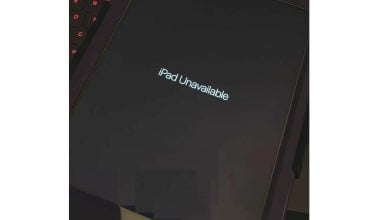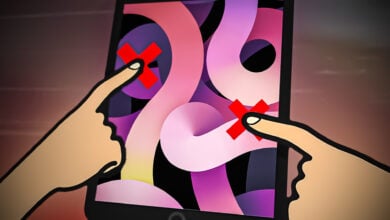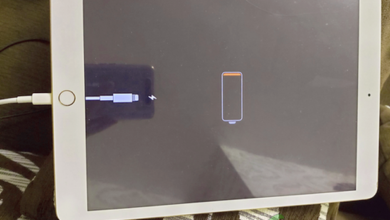How to Fix “iPad Could Not be Restored” Error 4013
- Understanding the common causes of Error 4013, such as faulty USB connections, outdated software, or insufficient storage, can help you prevent this error by taking active steps like using Apple-certified cables and keeping your devices updated.
- To resolve iPad Error 4013, start with simple solutions like restarting your device and updating software and progress to more complex fixes like DFU mode restoration, which can effectively resolve the issue.
- Regularly backing up your iPad ensures you won't lose important data if a factory reset is needed. If troubleshooting doesn't resolve Error 4013, don't hesitate to reach out to Apple Support for professional assistance.
Updating your iPad usually goes off without a hitch. Still, occasionally, you might encounter the “iPad Unavailable” error or need to use a wired USB to Lightning connection—especially with limited data connections or Wi-Fi unavailability.
One frustrating issue that can arise during these updates is “iPad could not be restored error 4013,” leaving users with little more than an “unknown error occurred” message.
Although Apple labels this as an “unknown” error due to its wide range of potential causes, several troubleshooting steps can effectively resolve error 4013 and related issues, such as errors 4005 and 4014, with a bit of guidance. This guide aims to simplify the process and help you swiftly return to using your device without disruption.
Table of Contents
What is the “iPad could not be restored error 4013?”
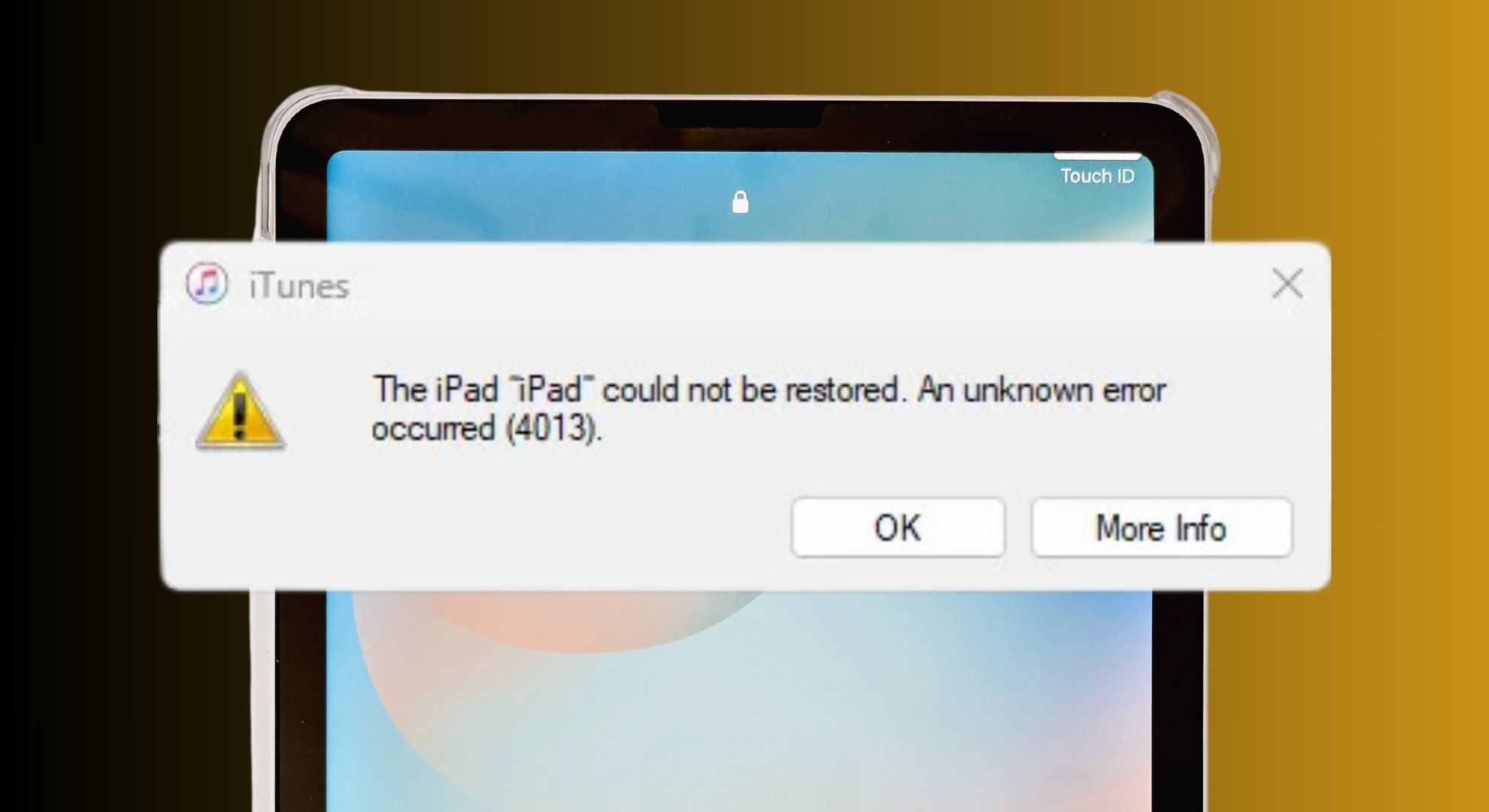
When you try to give your iPad a new update or restore it to a previous state, you could encounter a problem known as Error 4013. This particular error appears with a notification saying, “The iPad could not be restored. An unknown error occurred (4013).
This error occurs when you are trying to update your iPad by connecting it to your PC or Mac. Essentially, this issue is closely associated with hardware-related problems.
It often points to complications in the USB connection that links the iPad to the computer or could signal troubles within the iPad’s hardware components.
READ MORE: iPhone or iPad cannot be synced due to an unknown error – 39 ➜
↪ What causes this error?
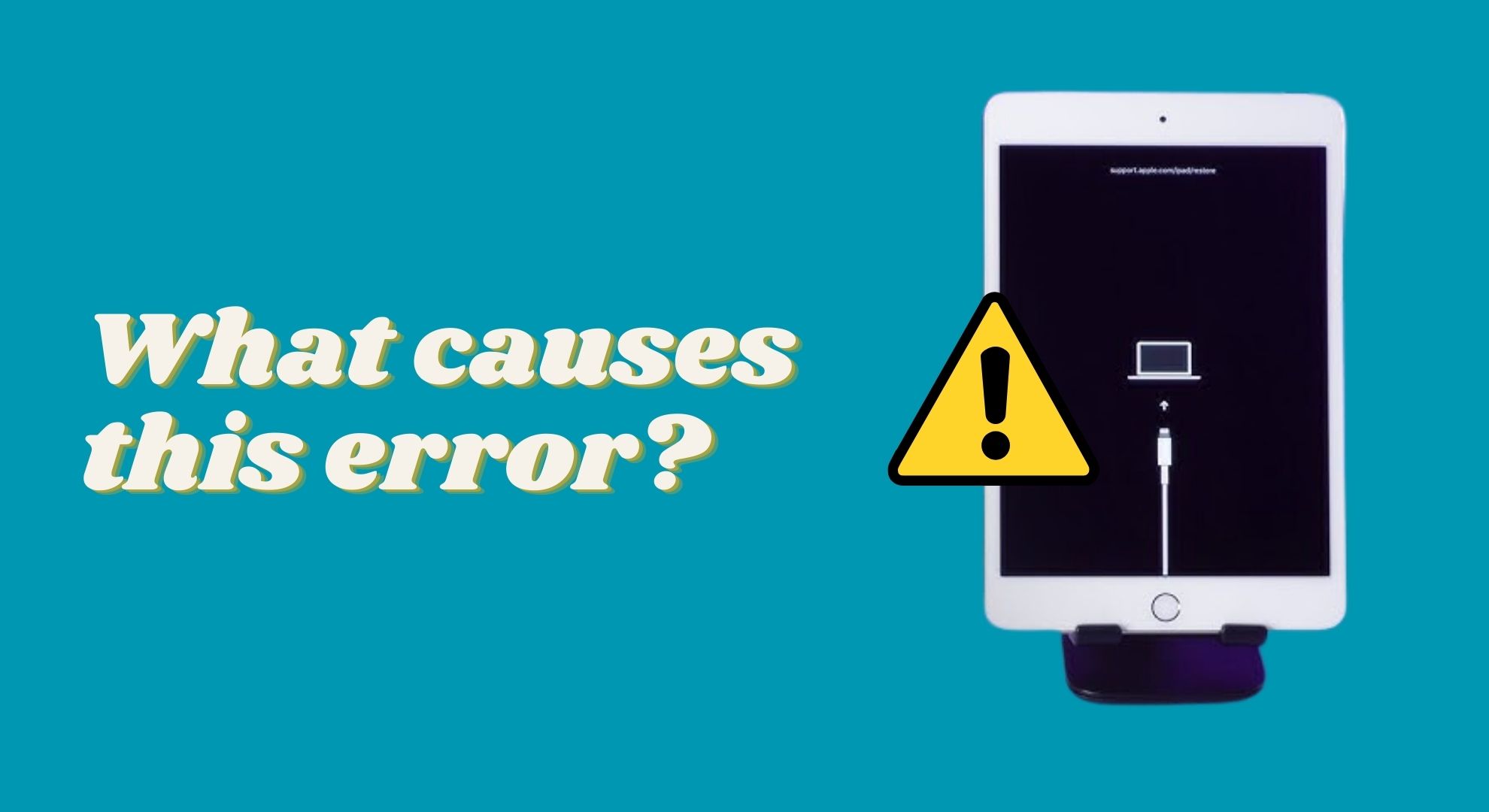
The “iPad could not be restored. An unknown error occurred (4013),” or iPad Error 4013, happens for several reasons. The usual culprits include bad USB cables, glitches in software, old versions of iTunes, problems caused by antivirus software, insufficient storage, and even issues inside the iPad itself.
- Faulty USB cable or port: If the USB cable or the port on your computer isn’t working right, it can mess up the connection between your iPad and the computer, which might cause Error 4013.
- Software glitches: Sometimes, there are minor problems in iTunes or the iPad’s operating system that can stop the iPad from being updated or restored properly.
- Hardware issues: Though it’s not common, Error 4013 can sometimes point to a more significant issue with the iPad’s internal parts.
- Antivirus software interference: If your antivirus software is too strong, it might mistakenly see the process of restoring iOS as a danger, which can lead to Error 4013.
- Insufficient storage space: Error 4013 can also appear if there’s not enough free space on your iPad for the update or restoration.
READ MORE: How to Unsync iPhone from iPad: 5 Different Ways [2024] ➜
How to fix iPad error code 4013?
Dealing with iPad Error 4013 might seem daunting, but you can often solve it on your own with the proper steps. These troubleshooting tips are designed to guide you through the process smoothly and efficiently.
Whether it’s a simple cable switch or a more involved software update, following these instructions can help you get your iPad back in working order.
1. Force restart your iPad
Sometimes, a significant issue with your iOS device can be fixed by simply restarting it. This can help with small software bugs. In this situation, you’ll want to do a force restart, also known as a hard reset, which is a bit more thorough than a regular restart. After that, try updating or restoring your device again.
- For iPads without a Home button: Press and quickly release the volume button nearest to the top button. Then, press and quickly release the volume button that’s farthest from the top button. Next, press and hold the top button until the device starts again and the Apple logo appears.

- For iPads with a Home button (and iPod touch 6th generation or earlier): Press and hold both the top button and the Home button simultaneously until you see the Apple logo.

READ MORE: iPhone Force Restart Not Working? Try These 9 Easy Fixes ➜
2. Update iTunes to the latest version
A major reason why you might see the iPad error 4013 is because of software issues. Since iTunes is crucial for updating or restoring your device, having the most current version is important.
An old version of iTunes might be why you’re running into this error. Updating iTunes, which is free, could fix the issue. Here’s how to make sure iTunes is up-to-date:
- Open the iTunes app on your computer, connect to your iPad, and tap on “Help.”

Tap on Help - Then select “Check for updates.”

Click on Check for updates - A prompt will appear about the update’s availability, and then choose “Download iTunes.”

Click on Download iTunes
Images sourced from: daily doubts
For Mac users with macOS 10.13.99 or earlier, follow the steps above because newer macOS versions don’t use iTunes. Instead, Ventura users should ensure their Apple Music app and computer software are current.
3. Update the iPadOS
Just as an outdated iTunes can lead to error 4013, missing updates on your iPad might be the issue, too. Make sure your iPad’s operating system is fully up-to-date. Installing any available updates might solve the problem. Here’s how to update your iPadOS:
- Start by opening the Settings app on your iPad. Tap on “General” and then choose “Software Update.”

Tap Software Update - If there’s an update waiting, hit the option to “Download and install it.”

Download and Install the latest software
Updating your iPad ensures that it’s running the latest software, which can often fix various issues, including error 4013.
4. Check your USB cable and connector
Make sure you’re using the right cable for your iPad, ideally the one that came with it, which should be an Apple-certified Lightning or USB-C cable. It needs to be in good shape, with no damage.
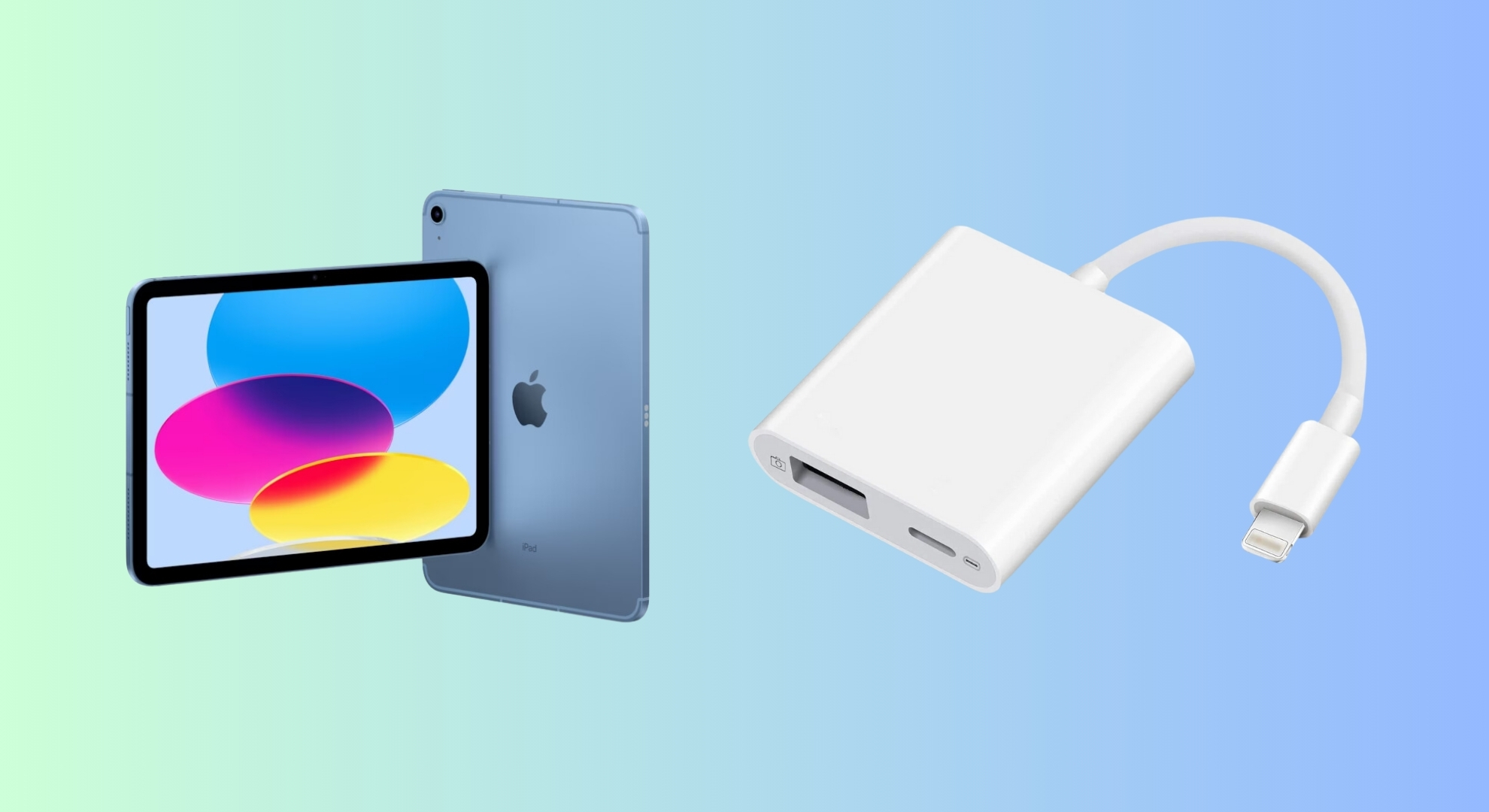
If you’re unsure, try using a different cable if you have an extra one. Cables from well-known brands usually work well, too, but be cautious with very cheap ones from the store. Those might only be good for charging and not for transferring data, which is what you need.
Here’s what to do:
- Use a USB cable that comes directly from Apple if possible.
- Double-check that the cable fits securely when you plug it in.
- Unplug and then plug the cable back in to make sure it’s connected properly.
- If that doesn’t help, switch to a different USB port on your computer.
- You can also try connecting your iPad to a different computer to see if that works.
READ MORE: How to Fix iPad Touch Screen Not Working Issue? ➜
5. Clean up iPad storage
Even though modern iPads have more storage than ever, running out of space is still possible. When your iPad gets too full, you might not be able to update it, leading to error 4013. Here’s a simple way to make some room:
- First, open the Settings app on your iPad and tap on “General.

Tap General - Next, find and tap on “iPad Storage.”

Tap on iPad software - You can also look through your apps and decide to either offload or delete the apps you don’t use anymore.

Clear apps data
Images sourced from: howfinity
It’s important to keep some space free on your iPad so it can run smoothly. If you’re running out of space, remember that Apple offers iCloud storage plans up to 12TB. This way, you can move some of your stuff to the cloud to free up space on your device.
6. Disable the antivirus or VPN

Sometimes, programs like antivirus, VPNs, or other security tools on your computer can stop iTunes from communicating with your iPad or iPod the right way. These programs might get in the way if you’re trying to update or restore your device.
You probably don’t need them on during the process, so try turning them off temporarily. If turning these off helps solve the problem, you can just turn them back on after you finish.
7. Try a different device
Try updating your iPad by connecting it to a different computer if you can. Doing this helps you determine if the issue is with your computer or your iPad. If you still face the same problem on another computer and have tried different cables, the issue is likely with your device.
READ MORE: How To Mirror iPhone or iPad to TV – 3 Methods ➜
8. Factory reset iPad from Settings
Fixing error 4013 might require you to reset your iPad back to how it was when you first got it. Before you start, it’s a good idea to back up all your important data because this step will delete everything on your iPad.
Here’s how to do a factory reset:
- Go to your iPad’s Settings and head to “General.”

Tap General - Keep scrolling until you find “Reset,” then tap it.

Tap on Reset - From the options, select “Erase All Content and Settings.”

Tap Erase All Content and Settings - You’ll need to type in your passcode if asked to make sure you want to reset your iPad.

Enter passcode
Images sourced from: H2TechVideos
After your iPad turns back on, the error 4013 should be fixed.
9. Restore in DFU Mode
A DFU (Device Firmware Update) restore is a bit more advanced type of reset that can often fix error 4013. It wipes your iPad entirely and installs the newest iOS version. Remember to back up all your data before you start, as this process removes everything from your device.
Here’s how to put your iPad into DFU mode:
- Connect your iPad to your computer using a USB cable.

Connect your iPad to computer - Hold down the side button and one of the volume buttons simultaneously.

Press the buttons - After 8 seconds, release both buttons. (If the Apple logo shows up, that means you pressed them for too long and need to try again.)

If Apple logo appears, try again
At this point, iTunes will notify you that it has found a device in recovery mode. You are now ready to restore your iPad.
10. Contact Apply Support
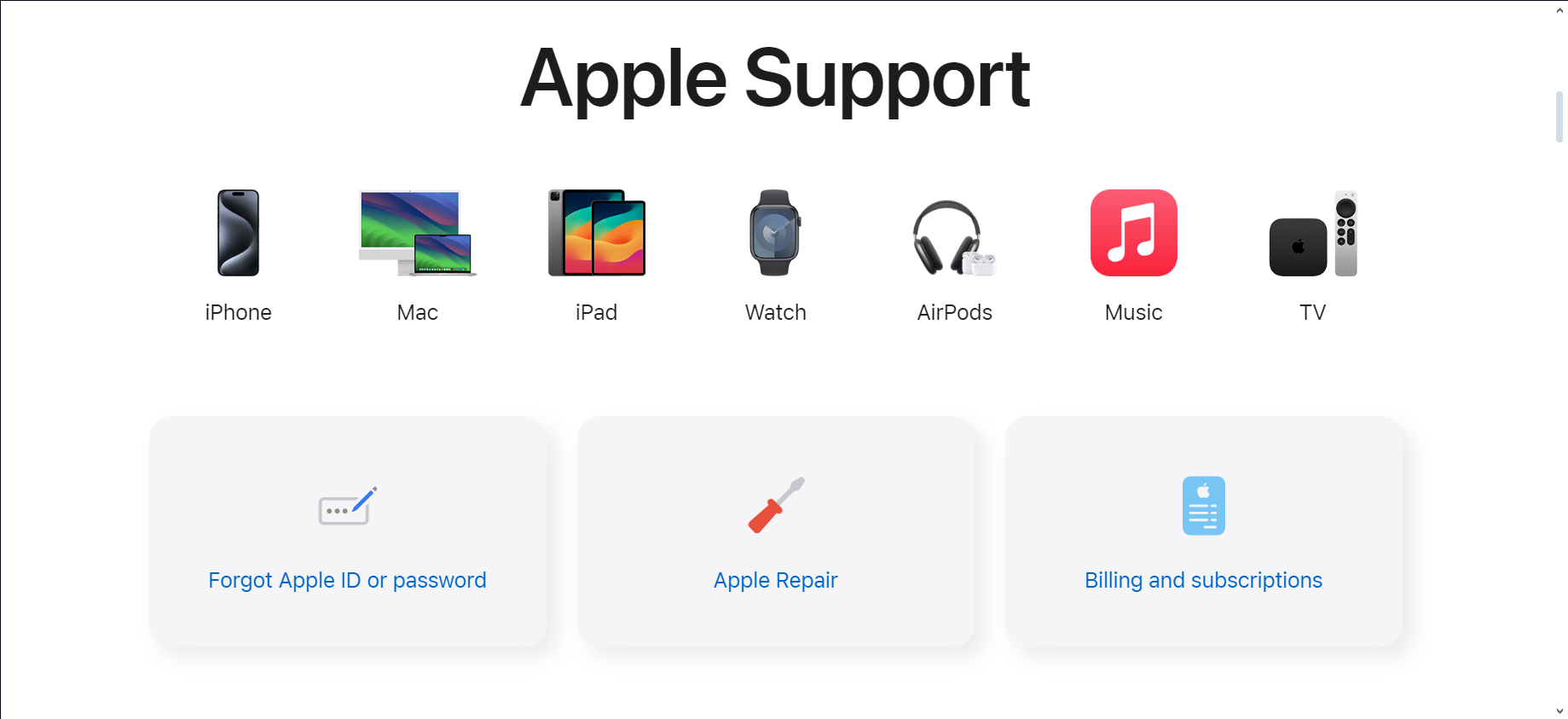
If you’ve tried everything and nothing has worked, it’s time to get help from the experts. You can take your device to an authorized Apple store or contact Apple Support for professional help. Although it might be a bit of a hassle, it’s the best thing to do in challenging situations.
Thankfully, the support team at Apple Support is pretty good at solving all kinds of problems, including the tricky iPhone 4013 error. Even if they can’t fix it immediately, they’ll give you different options to get your iOS device up and running again.
READ MORE: How to Contact Snapchat Support in 2024 [4 Different Ways] ➜
How to prevent such errors from happening in the future?
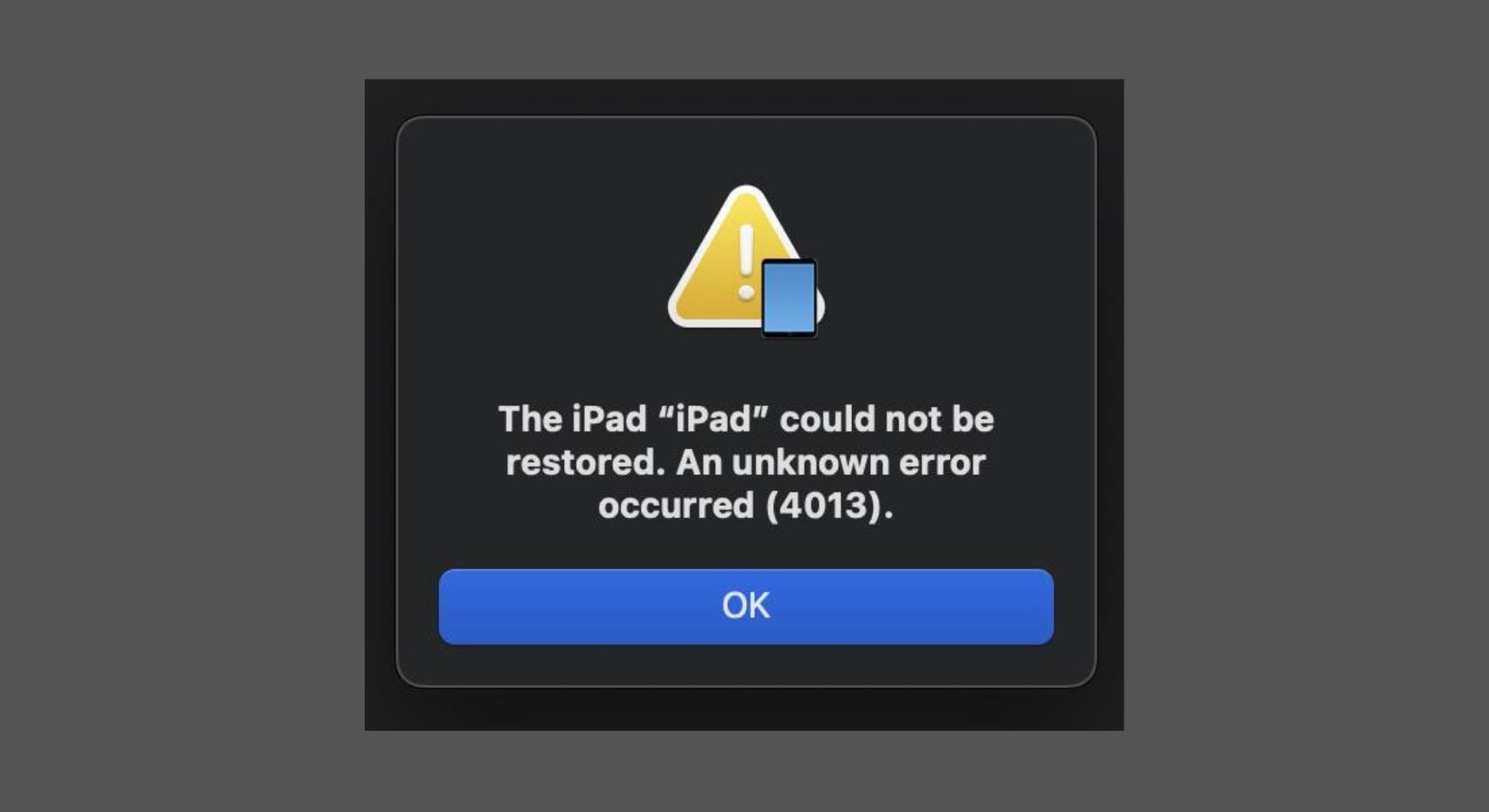
To minimize the chances of encountering error 4013 or similar issues in the future when updating or restoring your iPad, consider these proactive measures:
- Regularly update software: Keep both your iOS device and your computer’s operating system, along with iTunes or Finder, up to date. Software updates often include fixes for common bugs that can lead to errors during the restore or update process.
- Use official accessories: Always use an Apple-certified USB cable and power adapter. Third-party accessories might not maintain the same quality standards and could contribute to connection problems.
- Maintain device health: Free up storage space on your device by regularly managing your data and applications. A device close to its storage limit may encounter problems during updates or restores.
- Protect your device: Avoid exposing your device to extreme conditions, such as water damage or significant drops. Physical damage can lead to internal issues that may not be immediately noticeable but can cause errors like 4013 during software updates.
- Regular backups: Make backing up your data a regular practice. Whether through iCloud or your computer, having recent backups ensures you can recover your data even if you need to perform a factory reset or encounter update issues.
READ MORE: How to Connect Apple Pencil to iPad: All Generations Guide ➜
Final thoughts
Dealing with the “iPad could not be restored error 4013” might seem frustrating, but don’t worry; you can fix it. You’ve got many ways to solve this, like restarting your iPad, checking your cables, updating your software, cleaning up your iPad’s space, turning off any extra security software, trying another computer, or even resetting your iPad altogether.
If all else fails, Apple Support is there to help. To avoid this problem in the future, just keep your iPad and its software up to date, use the right cables, keep your iPad clean and safe, and always back up your data. With these tips, you’ll keep your iPad running smoothly and avoid errors like 4013.
FAQs
Water getting into a device can cause error 4013 during restoration attempts. If moisture gets to the logic board, it can damage important components and connections needed for the update process. It’s crucial to power off and thoroughly dry a device exposed to water to lessen any potential water damage.
Errors 4013 and 4014 are similar and often related to communication issues between your iPad and your computer during the restore or update process. The primary difference typically lies in the specific cause or part of the failing update process, but troubleshooting steps for both errors are generally the same.
No, error 4013 can occur on any iOS device, including iPhones and iPods, during the update or restore process via iTunes or Finder on macOS Catalina and later. The causes and solutions are generally the same across all devices.
Updating iOS via Wi-Fi, also known as an over-the-air (OTA) update, generally bypasses the potential USB connection issues that can lead to Error 4013. OTA updates eliminate the need for a computer and iTunes/Finder, reducing the risk of encountering this specific error during the update process.
 Reviewed by
Reviewed by 
